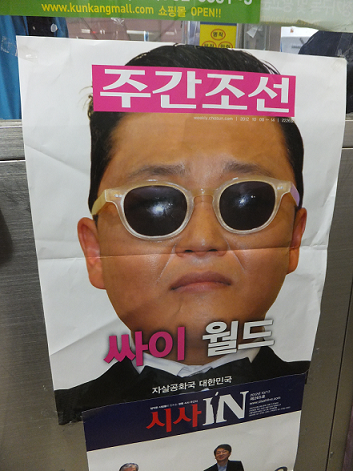Affordable Care Act improves access to care for children with disability: advocates (Part 1)
By Cristina DC PastorZariah Jimenez, a young girl with autism, regularly reports to two specialist doctors. Paying her medical costs would be financially draining, but her mother made sure she is covered under the government’s Medicaid for Individuals with Disabilities (MID).
“As one with a documented disability, she has actually the highest coverage available,” said her mother Cheryl Ocampo. “We don’t pay anything.”
MID covers Zariah’s visits to her doctors while the Board of Education pays for her therapy visits. Her policy also pays her dental care, emergency calls and the services of an In-Home Community Habilitation specialist who comes to the house and helps with her homework, tooth brushing, handwriting, socialization, feeding and other daily living skills.
“No co-pay (from us),” said Ocampo, who works as an information and outreach specialist for the United We Stand of New York nonprofit advocating for families with disabilities. “There are other services that she can be eligible for, but she does not need them at this time.”
Zariah, now 11, has been under MID coverage since she was 3. With the Affordable Care Act (ACA) slated to take effect on October 1st — Congress is currently debating a proposal to delay its implementation — the universal health care law should “not impact” her current Medicaid insurance, say advocates.
As a matter of fact, they said, the new law ensures the expansion of Medicaid coverage that will benefit Zariah in the long term. Starting in 2014, income eligibility for Medicaid will be 133 percent of the Federal Poverty Level (FPL) in every state, said Lorraine Gonzalez-Camastra, director of health policy of the Children’s Defense Fund-New York.
The passage of ACA is seen as serving more children with disability, for two principal reasons, according to Noilyn Abesamis Mendoza, director of Health Policy of the Coalition for Asian American Children & Families. They will not be discriminated because of pre-existing conditions, and adult children up to the age of 26 will remain under their parents’ health care coverage.
Zariah is quite fortunate to be a resident of New York, one of the more progressive states that does not discriminate against individuals with pre-existing conditions, even before the law was passed in 2010. And while the new law prescribes a cut-off age of 26 for adult children to remain under their parents’ insurance coverage, New York State extends the availability of health coverage to young adults through the age of 29, said Gonzalez-Camastra.
Starting October 1st, New York State will embark on an aggressive outreach and education campaign for a Health Insurance Exchange, as it prepares for the full-scale implementation of ACA on January 1, 2014.
Under the exchange, Americans with no health care coverage can purchase their insurance policy from an online marketplace. For the 2.6 million New Yorkers without health care coverage, that exchange offers an array of insurance plans and policies offered by about 15,000 providers.
“It’s kinda like a Costco,” said Elisabeth Benjamin, co-founder of the Health Care for All New York coalition, in a briefing for members of the community and ethnic media organized by New America Media.
Bringing together all insurance providers and their products in one exchange will have the effect of lowering monthly premiums, she said.
The Affordable Care Act is all of 906 pages, and key features for children with disability need to be highlighted.
Heidi Siegfried, director of Health Policy of the Center for Independence of the Disabled of New York, said important provisions in the law will apply to special needs children. One such provision is the “Community First Choice Option.” It provides home and community-based services for individuals under Medicaid that would “require the level of care provided in a hospital or a nursing facility,”
What this means, according to Siegfried, is that an individual with disability has the option to stay at home with his/her family instead of being sent to an institution. The state will provide medical assistance for home and community-based attendant services and supports for eligible individuals, usually those with conditions of mental retardation. These individuals will have assistance in “accomplishing activities of daily living, instrumental activities of daily living, and health-related tasks through hands-on assistance, supervision, or cueing,” according to the law.
“The idea is to incentivize states to provide more care in communities and not require individuals to reside in institutions so that people who want their care in a home or community setting can be fully integrated,” she explained. “This helps parents who want their children with disabilities to live with them at home, but need services and support to do so.”
Siegfried said the law also offers a comprehensive “essential benefits package” which are standard features in insurance plans under the Health Benefit Exchange. The package includes the following services: Ambulatory patient services, such as doctor’s visits and outpatient services, Emergency services, Hospitalization, Maternity and newborn care, Mental health and substance use disorder services, including behavioral health, Prescription drugs, Rehabilitative and habilitative services and devices, Laboratory services, Preventive and wellness services and chronic disease management, Pediatric services, including oral and vision care.
The essential health benefits, as spelled out in the ACA, “takes into account the health care needs of diverse segments of the population, including women, children, persons with disabilities, and other groups.”
Children and youth with autism and other developmental disabilities are “often inadequately covered under the current system of health coverage,” according to the national advocacy group Association of Maternal and Child Health Programs.
The ACA presents “unique, historic opportunities for improving access to care for children and youth with (disability),” it said.
NEXT: Many FilAm families unaware of Obamacare














[…] Originally published by New American Media, this article was written by Fi2W reporter Cristina Pastor. […]